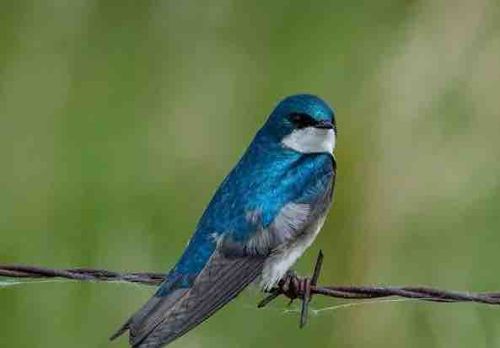Tree Swallow
Classification: Tachycineta bicolor (Family: Hirundinidae)

Brief Description
A medium-sized migratory songbird known for its acrobatic flight and iridescent blue-green upperparts. It often perches on wires or branches in open areas.
Additional Information
- Region of Origin: North America
- Typical Sighting Period: Breeding season: Spring and Summer (April to August in temperate regions); Migration: Early Spring and Fall
- Plumage Details: Adult Tree Swallows have iridescent blue-green upperparts (back, head, and wings) that can appear dark blue or green depending on the light angle. Their underparts are pure white, extending up to the chin. Juveniles are duller, often brownish or grayish above with a white belly, sometimes with a faint grey breast band.
- Ecological Significance: Tree Swallows are important insectivores, consuming large numbers of flying insects, including mosquitoes and other pests. They are also secondary cavity nesters, often using nest boxes provided by humans or abandoned woodpecker holes.
- Conservation Status: Least Concern (IUCN Red List)
- Observation Tips: Look for Tree Swallows in open habitats near water, such as marshes, fields, and shorelines. They are often seen catching insects in flight or perching on wires. Their distinctive iridescent blue back and clean white belly make them relatively easy to identify. They are strong flyers and very agile.